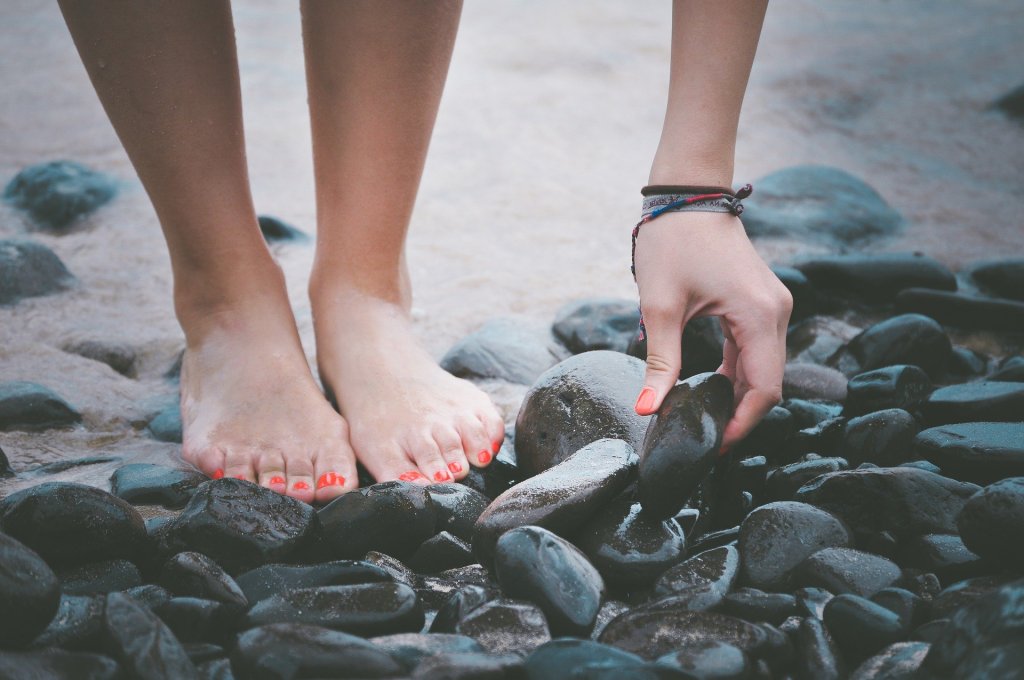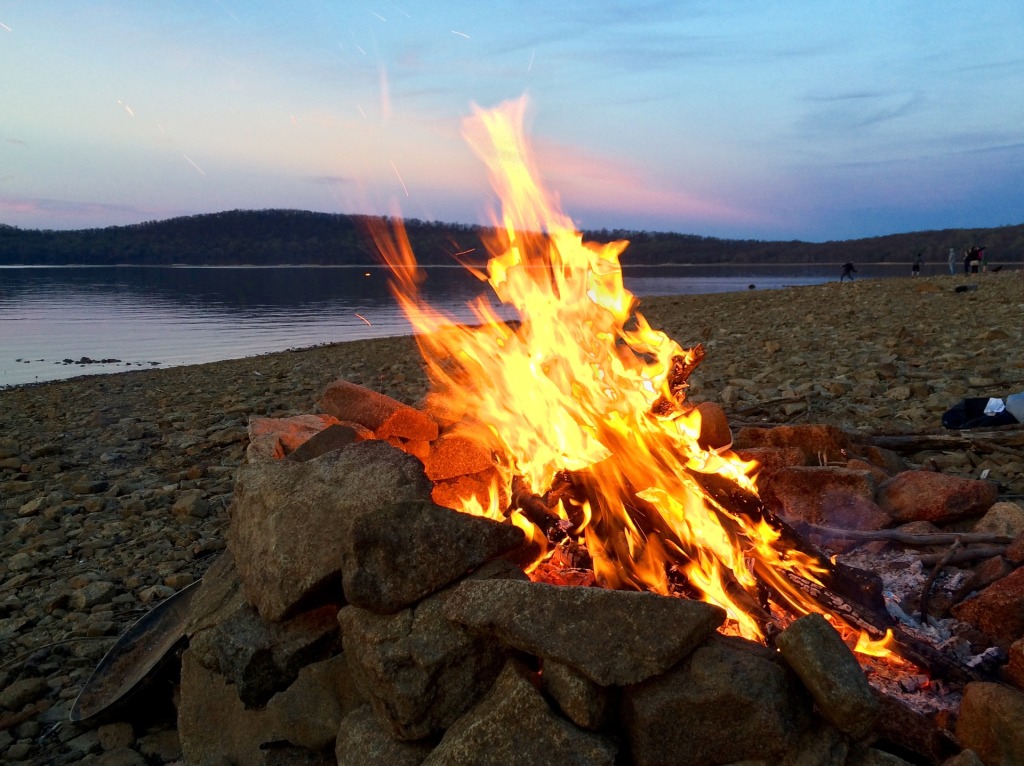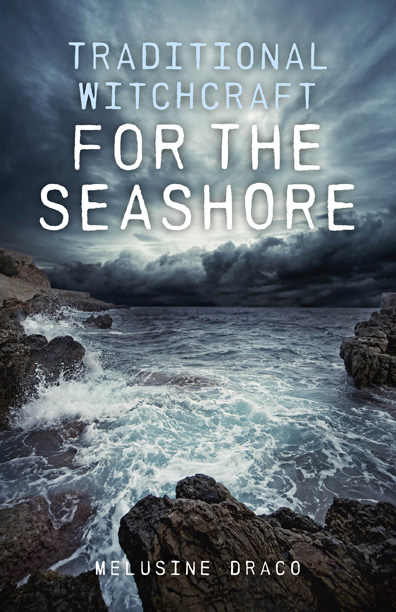| I must go down to the seas again, for the call of the running tide Is a wild call and a clear call that may not be denied; And all I ask is a windy day with the white clouds flying, And the flung spray and the blown spume, and the sea-gulls crying. [From ‘Sea Fever’ by John Masefield] |
Masefield’s poem is a magical chant all in itself. I must go down to the seas again, for the call of the running tide /Is a wild call and a clear call that may not be denied; It is the perfect introduction to those natural tides that witches call upon to power their magic – the solar and the lunar tides; the ocean and the earth tides; coupled with the atmospheric tides that make the Earth bounce.
Since the beginning of time, when man first stood on the shoreline and wondered at the vastness of the ocean, it has been recognised that the tides (the periodic rise and fall of great stretches of water), had something to do with the moon. Neither did it take him long to calculate that the usual interval between them was about 12½ hours; roughly half the time the moon takes to circle the earth. Nowhere else on earth was Nature’s power and glory so much in evidence.
In Sea & Seashore, Sir Isaac Newton’s words are used to explain the tides as being due to the moon’s gravitational pull on the water, lifting it to form a bulge resembling an enormous wave-crest. There are in fact two such bulges, one on the side of the earth facing the moon, and the other on the earth’s far side, for there the moon’s pull draws the earth away from the water. Between the two bulges the water is lowered, as though in the trough between these gigantic wave-crests. The friction between the water and the rotating earth slows the movement of these bulges, so that instead of being exactly beneath the moon, they lag a little behind. For this reason, high tide, as the bulge is called, does not occur exactly when the moon is overhead, but somewhat later.
The sun’s gravitational pull similarly raises tides akin to, but less powerful than those caused by the moon. Their period is about 12 hours instead of the 12½ – but the two interact. At full and new moon, when the sun and moon are in a straight line with the earth – this recurs at intervals of about a fortnight – they co-operate to produce an especially powerful spring tide. This has nothing to do with the annual spring season: spring tides occur throughout the year and rise higher and fall lower than usual, although the lowest spring tides of the year occur around the Spring or Vernal Equinox. At the first and third quarters, when the sun and moon form a right angle with the earth (again, roughly, at fortnightly intervals) – the pull conflicts, making a neap tide whose range is unusually small.
In mid ocean, the tides, like ordinary waves, are simply a rhythmic rise and fall of the water. On the continental shelf, however, they act like the waves on a beach, and become a bodily rush of the water towards, or away from the land. The rising water produces the tide’s flow or flood; its fall is the ebb, and between them, when the tide is almost at a standstill, there are brief periods of slack water. This rise and fall takes place twice every day, but high or low tides occur about 50½ minutes later each day and alter drastically throughout the month. While most shores have two high tides every day, some have only one, and some none at all.Instead of one great progressive tide circling the earth, there are a number of local tides, differing greatly in the areas they cover, and the sea-witch learns to recognise the importance of knowing about them from both a magical and safety point of view.
Besides the familiar tides of the ocean, there are those other examples to take into account: earth-and atmospheric-tides. Earth-tides refer to the alternating slight change of shape of the Earth due to the gravitational action of the sun and moon, and atmospheric tides of the alternating slight motions of the atmosphere, which have the same cause and effect. The moon draws away the envelope of air that surrounds the Earth to produce the regular daily atmospheric tides.
Joint research by a team from the Ordnance Survey at Newcastle University and the Proudman Oceanographic Laboratory at Birkenhead has revealed more evidence of the effects of these earth-tides. The results show that parts of western Britain and Ireland, for example, ‘bounce’ by about four inches and that this movement is caused as tides ebb and flow twice daily! The nationwide survey also showed that the deformation of the Earth’s crust varies across the country and that the eastern side is much more stable than the west.
According to a spokesman for the project, when the tide is in, the extra weight of the water on the continental shelf pushes the adjoining crust down a few inches. At low tide, the Earth springs back. ‘Because tidal ranges are greater on the south-western side of the British Isles, that is where the biggest bounce can be found.’ The western tip of England, west Wales, the Western Isles and southern Ireland, have the biggest range of movements. Again, we have scientific proof of cosmic influences on the very earth on which we stand, so magical working can be timed to coincide with these natural movements for greater effect.
• High tide, just before the water pressure is at its greatest, would be the best time for positive or drawing magic.
• Low tide, when the tide has turned and the earth is about to ‘bounce’ back, is the time for banishing or reducing magic.
Around the world there are thousands of miles of coastline: rugged cliffs, tidal-battered rocky shores, sweeping estuaries, gentle brackish creeks, golden sand and shingle beaches. Although each has an enchantment all of its own, few of us are fortunate to live near enough to the sea to use this dramatic shoreline as a regular magical working area. And yet, for a natural witch, born and bred by the sea, the beach and rocky shore are equally as magical as the inland woods and hills of more traditional approaches to witchcraft.
And even if we never went near the sea except for an annual summer holiday, most of us from Scandinavia, and around the British and Irish coasts to Iceland, can instantly recall the sonorous, chant of the daily shipping forecast that took us on a flight of fancy to the wildest coastlines around our shores. Broadcast four times a day, the radio brought us a brief moment of sea-magic, as wonderful and evocative as a Latin Mass …
Viking : North Utsire : South Utsire : Forties : Fisher : Cromarty
Forth : Tyne : Dogger : German Bight : Humber : Thames : Dover :
Wight : Portland : Plymouth : Biscay : Trafalgar : FitzRoy : Sole :
Lunday : Irish Sea : Fastnet : Shannon : Rockall : Malin : Hebrides :
Bailey : Fair Isle : Faeroes : South East Iceland …
This mysterious, but totally meaningless jumble of words, still has the ability to conjure up pictures of grey, heaving northern seas with lashing rain and gale force winds. By stark contrast, it also has the ability to evoke warm, family memories of childhood tea-tables, cosy firesides, and comfort food – although perhaps not for those who were being warned that a gale force-nine was headed in their direction.
This brief maritime detour is included to demonstrate how potent simple words can be; how a rhythmic recital can paint mind pictures in much the same way that an evocative piece of music can. And even if the US marine forecast doesn’t produce quite the same kind of enchantment, Fleetwood Mac’s Albatross, can summon images of this magnificent bird gliding effortlessly over the waves, a tireless companion of sailors in the southern seas.
This is the first lesson in sea magic …
The purpose of writing Traditional Witchcraft for the Seashore was to introduce land-lubbering witches to the natural energies that can be harnessed and used to power our inland magic. For this we need to add several natural history books concerning the seashore and weather lore to our magical library and, if we are near to the coast, we should make sure we have an up-to-date listing of the local tides. For those living inland, the daily broadsheet newspapers or the internet will supply general information about the daily (and river) tides. Or contact the harbor master on any of the great tidal rivers.
We need to familiarise ourselves with this new way of thinking about magical tides, and record the readings of our own witch-power exercises in a personal Magical Diary. Keep experimenting at different times and under different conditions until the process becomes automatic.
Instead of synchronising our magical workings according to any popular ‘wheel of the year’, try working with the natural tides that are having their effect on the earth and its atmosphere on a day-to-day basis.
Take some time to watch the sky, even if it’s through a windowpane, and try to become more aware of the changing clouds and colour patterns, and learn to understand what they are telling us.
A sea-witch works during the day as well as after dark, so if our trips to the beach are restricted to daylight hours, this will not cause any problems with our magical development. The seashore also offers opportunities for observing ‘portents’ or ‘sights in the heavens’ that are not always visible from inland. These phenomena, of course, demand a clear sky, and are best seen on moonless nights, although on the western shores it is possible to witness some of the most fantastic Turnereque seascapes imaginable, at any time of the day. Although they are natural phenomena, there is nevertheless a magical quality about witnessing such happenings, and a sense of being in the right place at the right time; to being privy to something special. The opportunity should never be missed ‘to stand and stare’ – even at a reflected chain of coloured lights from the esplanade, in the night-time waters of the bay.
I do not live near the sea, but it has always been a dream, should I ever decide to take my leave of the mountains. In Wales I lived on a tidal river and trips to the coast were made on a weekly basis from the wide sweeping bay with its petrified forest, to the historic harbours. Researching and experimenting with sea-witchcraft for the book was great fun and extremely illuminating when it came to encountering this wonderful world on a magical basis. And although I do not live by the sea, there are those summer days when the wind is coming from the west and there is a sharp tang of iodine on the breeze coming in off the Atlantic which makes me think “I must go down to the sea again …”
Traditional Witchcraft for the Seashore by Melusine Draco takes us on a magical journey and reveals how the inshore witches can learn to work with these primal energies even if they do not live by the sea. From the creation of a sea-witch’s garden regardless of where we live to advanced path-workings with the ‘Power of the Deep’, no traditional witch should be without this book. ISBN 978 1 84894 426 0 : Pages 150 : Price UK£9.99/US$16.95 : Available in paperback and e-book format it is the second in the Traditional Witchcraft series and published by Moon Books.






